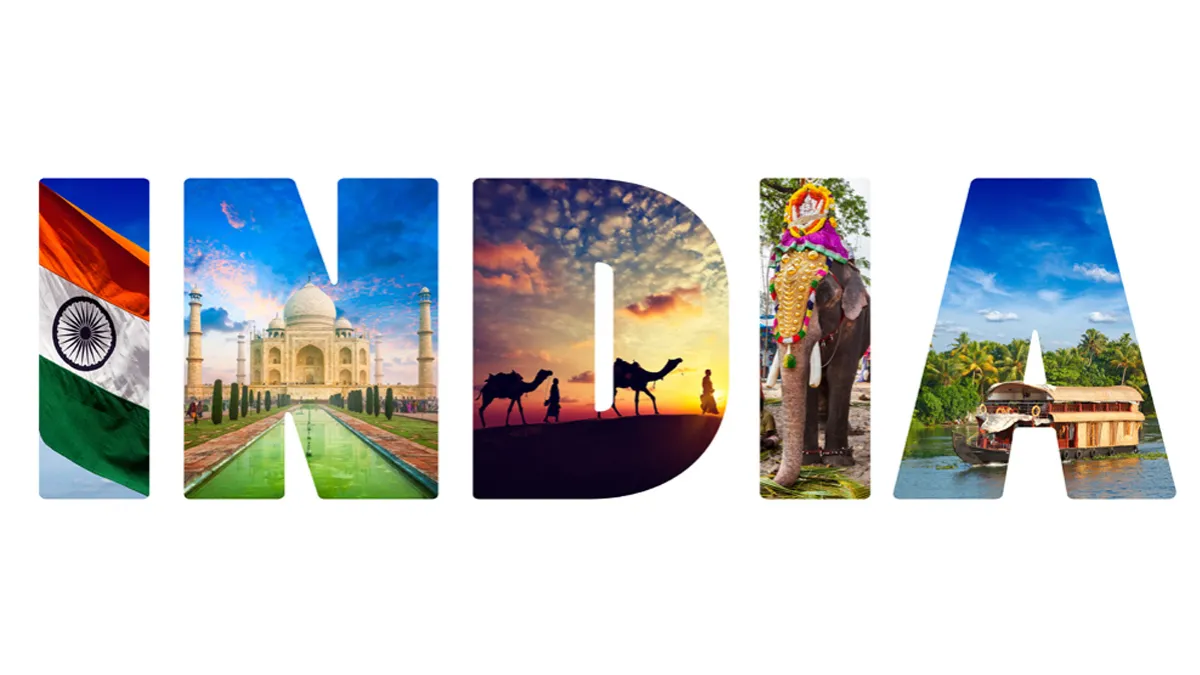
The richest and most diverse cultures thrive in India making it an exotic land. It is hard to imagine India in one picture. It is so diverse and filled with colour that imagination explodes. Close your eyes and be guided by a visual and spiritual journey and the magic that is India. India is a land one must explore. You miss out huge when you leave it unexplored.
You can never stop exploring the vastness and the secrets that India is. It is a land we feel us more intensely. The place, religion, people, cuisines, clothing everything is unique in this magical land. India is indeed a place of Oneness despite innumerable differences. A place of “'Unity in Diversity' as used by Jawaharlal Nehru in his book 'Discovery of India'. It stands its significance even today as an expression of harmony and unity amongst different regions and cultures. A tolerant nation of physical, cultural, linguistic, social, religious, political, ideological and/or psychological differences building towards a more complex unity based on an understanding that difference enriches human interactions.
Indian culture is an invaluable possession of Indian society and one of the oldest cultures of the world. Indian culture shines with all its glory and splendor. Culture is the soul of a nation.
Indian culture is one of the most ancient cultures of the world with tolerance and liberalism found in all religions, castes, communities, etc. Indian society gave every culture that has landed in its soil, the opportunity to prosper. It has accepted and respected Shaka, Huna, Shithiyan, Muslim, Christian, Sikh, Jain, Buddhist cultures all the way along. The social status of a person is decided by the social structure which is made of thousands of castes and sub-castes. India as a mother have been tolerant towards every religion and has embraced and allowed them to flourish.
Indian culture has a unique property of adjustment, and due to its adaptability and co-ordination, Indian culture remains intact. Adaptability has a great contribution in making Indian culture immortal, it being an essential element of longevity of any culture. It has always accepted the good of the cultures and acts like the ocean, in which many rivers come and meet.
The Indian culture is based on values, so its development is continuous. It is ever glowing, and the glow gets magically brighter as it withstood the test of many centuries, occurrence of many changes, foreign invasions.
Language, which is another source of cultural diversity as well as unity, contributes to collective identities and even to conflicts. Twenty-two languages are recognised by Indian Constitution, with all the major languages having regional and dialectical variations besides several other dialects.
India has the largest collections of folk and tribal artefacts, inspired by religion and centres around sacred themes and there is nothing ascetic or self-denying about it. Indian art forms reflect diversity of life and nature.
Major forms of classical music in India are the North Indian Hindustani classical music and South Indian Karnatik music. The classical Indian dance is also a beautiful and significant symbol of the spiritual and artistic approach of the Indian mind with it being present in every stage of domestic life in India. Indian songs and dances are composite art forms that interweave the rich tradition of folklores, legends and myths.
Based on all these differences, imagine the diversity in food – the basic need of human. With the Indian culinary range reflecting the cultural diversity of the country, the food here consists of blend of exciting and tantalising flavours from every nook and corners of the mystical land. It showcases centuries of cultural exchange with the far corners of the world. Indian cuisine denotes something which contains multiple layers or aspects beneath the surface. All the trade, travel, conquests and invasions contributed towards India’s culinary heritage. The spices and hot dishes of all colors will arouse the sense of sin and a strange taste within us which is different and addictive. A whole wide world full of mysteries and pleasures, with each bite being a temptation. From North to South, East to West, there are countless cuisines to try out.
Bengali cuisine well known for its use of panchphoron, a term used to refer to the five essential spices, namely mustard, fenugreek seed, cumin seed, aniseed, and black cumin seed. Bengali food utilises a perfect blend of sweet and spicy flavors.
Traditional Gujarati food, primarily vegetarian, contains in them high nutritional value. A typical Gujarati thali consists of varied kinds of dishes that will make us want more with its flavours.
Kashmiri food highly influenced by the traditional food of the Kashmiri pundits, has now adopted some of the features of the cooking style adopted in Central Asia, Persia, and Afghanistan.
Mughlai cuisine consists of the dishes that were prepared in the kitchens of the royal Mughal Emperors and rich with flavours of spices, saffron, ghee and other diary produces, dry fruits etc.
Punjab's cuisine includes variety of mouth-watering vegetarian and non-vegetarian dishes with the spice content ranging from minimal to pleasant to high.
The cuisine of Rajasthan is primarily vegetarian, and the variety mouth-watering dishes have the spice content quite high in comparison to other Indian cuisines and well known for its spicy curries and delicious sweets. The food is scrumptious, and ghee is used for cooking most of the dishes.
Mainly rice-based, South Indian cuisines is known for its light, low calorie appetizing dishes. It extensively uses rice and lentils and delicious dosas, vadas, idlis and uttapams are contributed by this style.
Already hungry. The list doesn’t end there as you can indulge in myriad forms of tastes and flavours across India.
Explore India as it is truly a soulful journey enriching our inner consciousness.
